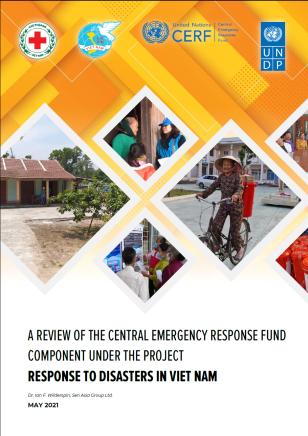A review of the central emergency response fund component under the project "Response to disasters in Viet Nam"
A review of the central emergency response fund component under the project "Response to disasters in Viet Nam"
July 14, 2021
A succession of intense storms, typhoons, triggering floods and landslides impacted Central Viet Nam from 5th October 2020. The floods focused on Ha Tinh, Quang Binh, Thua Thien Hue, Quang Trị, Quang Nam, and Quang Ngai. More than 235 people were reported dead or missing. At least 380,000 houses were flooded, wind-damaged, or destroyed and damages estimated at VND 17 trillion (US$ 734.67 million). According to three inter-sector Joint Assessment Teams who visited the affected areas from the 21st to 23rd October, the flood levels and storms were unprecedented, causing widespread damage to people’s homes and crops, the death or loss of livestock, and affecting the lives and livelihoods of over 1.5 million people.
In the aftermath of the storms and floods, tens of thousands of vulnerable households were among the hardest hit. Many poor and near-poor people did not have the means to invest in house repairs, reconstruction, or purchase necessities. UNDP in Vet Nam mobilised finance for emergency humanitarian assistance, including USD 1 million from the UN Central Emergency Response Fund (CERF), targeting Quang Binh, Quang Tri, Thua Thien Hue, Quang Nam, and Quang Ngai, with house repairs and providing gender-responsive household kits.
The CERF Results Framework describes the project objective ‘to immediately improve life-threatening living conditions of the most vulnerable flood-affected households. The two outputs are:
- House repairs support provided to 3,323 households through cash assistance to ensure safe and dignified lives post-disaster; and
- Basic needs of 3,323 households addressed through gender-responsive household kits; both outputs require a minimum of 20 per cent female-headed households.
This report summarises the main findings, conclusions, and recommendations of the review of the CERF component of UNDP’s support in the affected areas. The report aims to supply relevant decision-makers in the Government, UNDP, project partners and development partners with an overall, independent assessment to make an informed judgment about the performance of the interventions.

 Locations
Locations